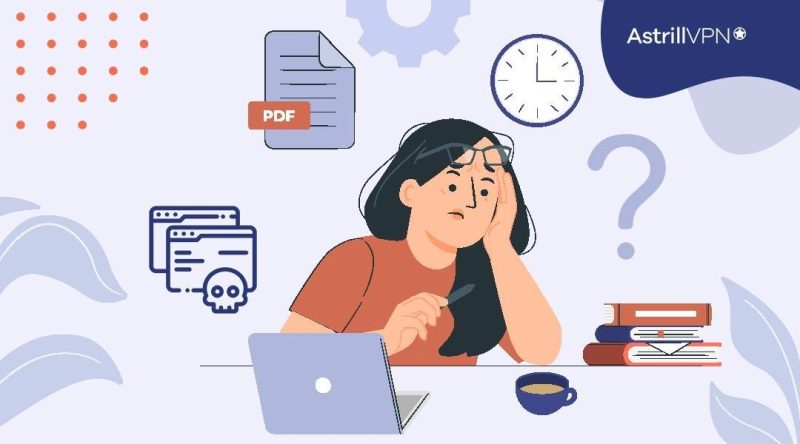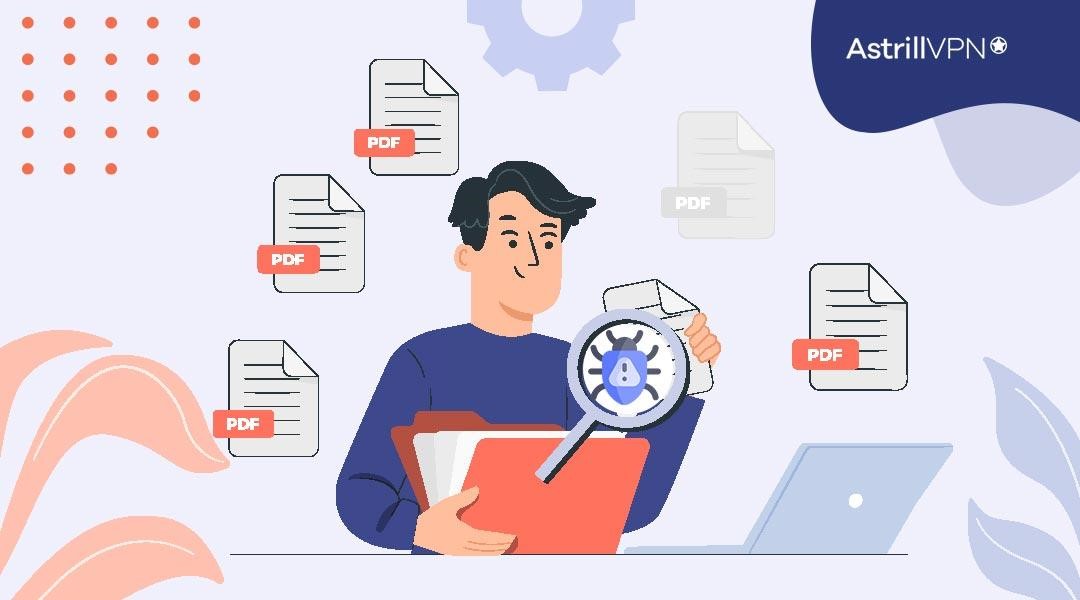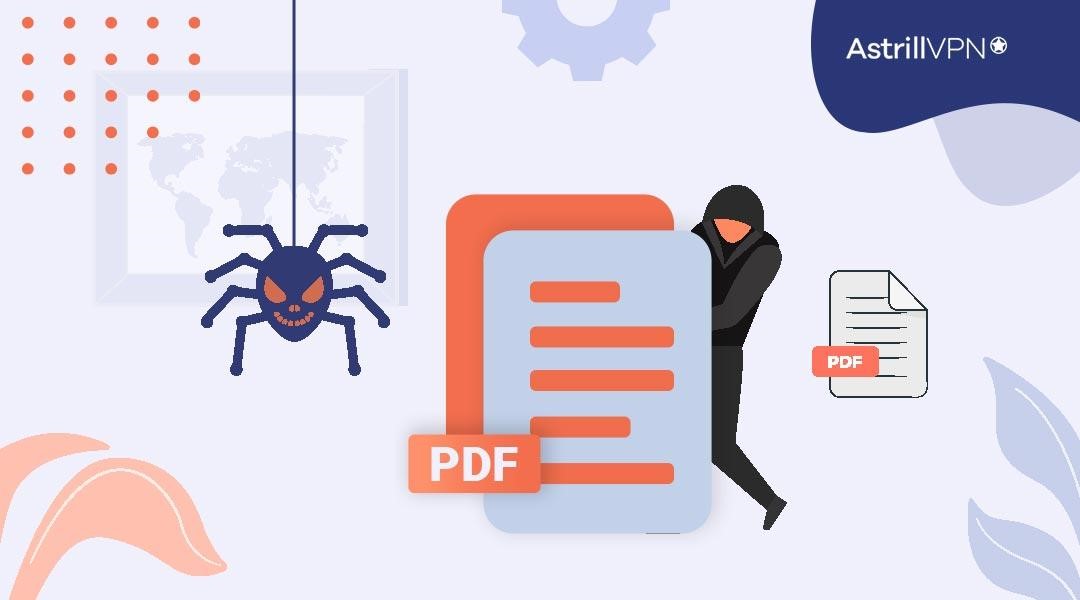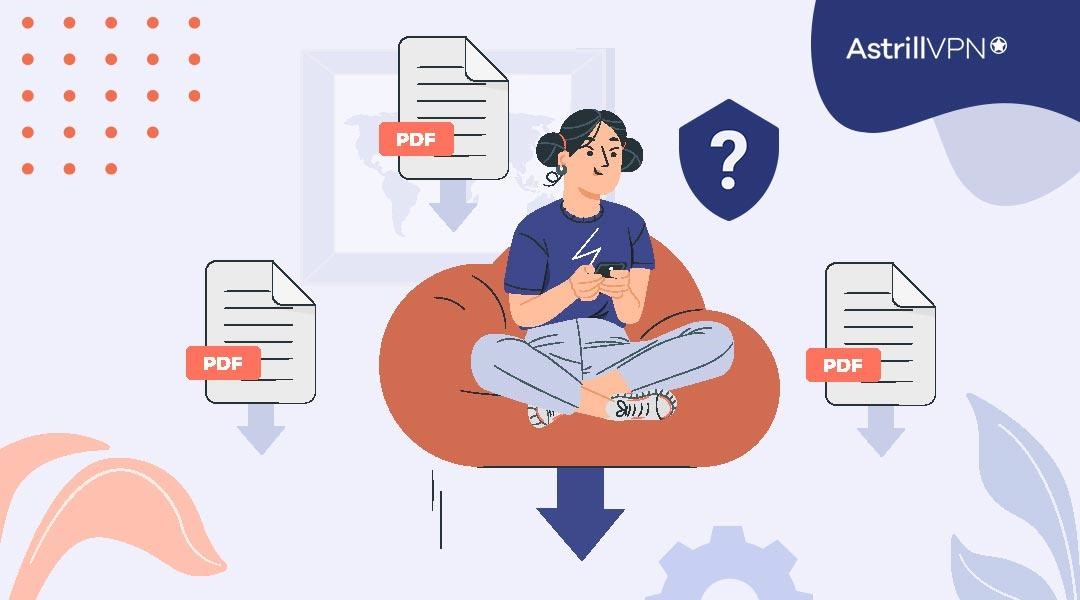Can PDFs Have Viruses? Debunking the Myth and Understanding the Risks

PDFs have long been a vehicle for malware and viruses. But can a PDF have a virus? The short answer is no, PDFs are simply a file format and are not inherently malicious. However, that doesn’t mean you should let your guard down when dealing with PDFs from untrusted sources. While PDFs may be a common target for cybercriminals to spread viruses, the PDF file itself is not the virus. The real risks come from embedded files and scripts within the PDF, or by disguising executable files as PDFs. By understanding how PDFs can be manipulated and taking some basic precautions, you can confidently open PDFs while avoiding the viruses and staying safe. Let’s find out can pdf files have viruses?
Table of Contents
ToggleCan PDFs have Viruses? The Truth Explained

The short answer is yes, PDF files can contain viruses. But before you delete every PDF from your computer, let’s look at the facts`.
PDFs are popular precisely because they seem so safe. They’re designed to preserve documents exactly as intended, so they’re trusted for sharing financial statements, legal contracts, and more. However, hackers have figured out ways to embed malicious code in PDFs that can infect your system when opened.
- PDFs can contain JavaScript, which hackers exploit to distribute malware. By disabling JavaScript in your PDF viewer, you eliminate this threat.
- Outdated PDF software is vulnerable to known exploits. Keep your PDF viewers, editors and readers up to date with the latest versions to patch security holes.
- PDFs from untrusted or unknown sources are most risky. Only download PDFs from reputable websites and people you know. If something looks suspicious, it’s best to delete it.
How Viruses Can Infect PDF Files?
PDF files can contain viruses, but the risk is often overblown. While possible, it’s actually quite rare for PDFs to contain malware. Here’s how it can happen and how to stay safe.
- PDFs are designed to display documents, not run programs. But hackers have found ways to embed malicious code that can infect your computer. Usually, this involves exploiting vulnerabilities in outdated PDF readers and Acrobat software.
- Another method is attaching infected files to PDFs, like .exe files disguised as images or fonts. Delete the PDF immediately.
- Some hackers also use “social engineering” techniques to trick you into enabling certain features in your PDF reader that allow viruses to run.
How PDFs Can Be Used to Spread Malware? Can you get a virus from opening a PDF?

PDFs can potentially contain embedded malware or links to malicious sites, so exercise caution when opening them. Hackers have gotten clever at disguising viruses, worms, and other nasties within PDFs to get access to your system.
Once a PDF is opened, the malware can automatically install itself or prompt you to click a link or download an attachment that contains the infection. These types of attacks are known as PDF-based phishing. The hackers create PDFs that look like legitimate files from trusted sources to trick people into opening them.
Some signs a PDF could contain malware:
- It’s unsolicited or from an unknown sender. Delete these immediately without opening.
- It has a strange filename or subject line. Legitimate companies don’t use odd characters or subjects to get you to open files.
- It urges you to enable macros or click links when opened. Never enable macros or click links in unsolicited PDFs.
- It was scanned or faxed. These are easy to manipulate and infect with malware.
- It loads slowly or the file size seems too small or large. Malware-infected PDFs often behave strangely.
The bottom line is be wary of any unsolicited PDF, even if it looks legitimate. It’s always better safe than sorry when it comes to your digital security.
Is It Safe to Download PDF Books and Files?

If you want to know are pdf files safe or can downloading a pdf be dangerous then the answer is while PDF files themselves can’t contain viruses, that doesn’t mean they’re 100% safe to download and open. There are a few risks to be aware of when downloading PDF books, files and documents from unknown or untrusted sources.
Malware in Disguise
Hackers often disguise malware as PDF files to trick people into downloading and opening them. The PDF is just a front, and the malicious software is embedded inside. Once opened, it can install viruses, ransomware or spyware on your computer.
Phishing Attachments
Phishing emails frequently come with PDF attachments to lure victims into clicking. The PDF may appear legitimate but actually contains links or downloads that infect your PC when opened.
Corrupted or Manipulated Files
Not all PDF risks are malicious. Some files are simply corrupted or have been manipulated in a way that could damage your system. It’s best to only download PDFs from trusted sources you know and verify.
Is PDFDrive Safe?
PDFDrive is a popular website for downloading free PDF files on almost any topic. While the majority of files on PDFDrive are secure, some risks do exist. It’s possible for malicious actors to upload infected files to the site, though PDFDrive does have measures in place to prevent this.
To stay safe when using PDFDrive:
- Only download PDFs from trusted, verified uploaders.
- Never click suspicious links or download attachments inside PDFs.
- Scan any downloaded PDFs with up-to-date antivirus software before opening.
- Be wary of PDFs that ask for sensitive info like passwords or credit card numbers. Legit PDFs won’t ask for this.
- If something seems off about a PDF, it’s best to delete it. Your security is more important.
How to Tell if a PDF File Is Infected?
To determine if a PDF file has been infected with pdf malware, there are a few signs to look for.
- First, check if the file size seems excessively large for the content. Malware attachments are often much bigger than normal files.
- Second, look closely at the sender’s email address and name. Does it match the actual sender, or does it look spoofed? Spoofed addresses are a common tactic used by hackers to spread infected files.
- Third, be wary of urgent or alarming language or requests that seem out of the ordinary. Legitimate companies don’t ask you to click links or download attachments from unsolicited emails.
- Finally, check if the PDF file behaves strangely when you try to open it. It may not open at all, or you may get error messages. It could also try to automatically download other files or execute commands, which is a major red flag.
If anything seems off about the PDF file or the email it came with, it’s best to delete it immediately. It’s always better safe than sorry when it comes to potentially infected files.
Can opening a PDF be dangerous from internet libraries and search engines?
When opening and downloading free PDFs, take these precautions:
- Only download from reputable sites like university libraries, research organizations or large companies. Avoid anything that seems sketchy.
- Check reviews and ratings of the site before downloading. See what other people say about its safety and legitimacy.
- Scan the PDF before opening. Use an antivirus program to check for any malware.
- Look for signs the PDF isn’t what it claims to be. Strange file names, sizes that don’t match the purported content, or lack of publisher info are red flags.
- If something seems off, don’t download. It’s not worth the risk. Your security and privacy are more valuable than any free book or document.
Best Practices for PDF Safety: How to Open PDFs Securely
The safest way to open PDFs is to take some basic precautions.
Trustworthy Sources
Only download PDFs from trusted, verified sources. Never open attachments or click links from unknown or suspicious senders.
Antivirus Software
Make sure you have reputable antivirus software installed and up-to-date. Run a quick scan of the PDF before opening to check for any malware.
Sandboxing
Opening PDFs in a “sandboxed” environment isolates them from the rest of your computer. Programs like Adobe Reader and Foxit Reader have built-in sandboxing features. Enable them in the security settings.
Be Wary of Enabling Features
Don’t enable any interactive features like JavaScript or Flash in the PDF viewer unless absolutely necessary. Only enable them temporarily on a per-file basis. These features can potentially be exploited to distribute malware.
Keep Software Updated
Update Adobe Reader, Adobe Acrobat, and other PDF viewing software regularly to ensure you have the latest security patches installed. Outdated software is an easy target for malware and exploits.
By taking these straightforward precautions, you can feel comfortable opening PDFs, knowing you’ve reduced the risks. Staying vigilant and using common sense judgment about the PDFs you choose to open will help keep your computer secure.
Best Antiviruses for Protecting Against PDF Viruses in 2023
The best antiviruses for protecting against PDF viruses and malware in 2023 include:
● McAfee Total Protection
It offers real-time scanning of PDFs and other files as you open them. It has a “file lock” feature to prevent unauthorized changes to PDFs. McAfee is a reputable name in cybersecurity and their software is affordable, user-friendly, and provides comprehensive protection.
● Bitdefender Antivirus Plus
It is a highly-rated antivirus that provides layered protection against PDF threats like embedded malware, malicious links, and fileless attacks. Bitdefender uses behavioral detection to identify suspicious activity and block threats in real time. They frequently update their software to defend against the latest PDF risks.
● Kaspersky Anti-Virus
It is a popular antivirus solution that scans PDFs and other files for viruses, malware, ransomware and more. Kaspersky uses advanced heuristics and machine learning to detect brand new PDF threats. They offer malware removal and file recovery tools in case of infection. Kaspersky gets top ratings in independent tests for PDF security.
How AstrillVPN can help avoid downloading pdfs with virus?
AstrillVPN can help avoid downloading viruses in PDFs in a few ways:
Encrypt Your Connection
When using AstrillVPN, all of your internet traffic is encrypted and routed through a secure VPN tunnel. This makes it much harder for hackers to infect your device with malware, even if you download a malicious PDF file. The encryption acts as an extra layer of protection for your data.
Change Your IP Address
AstrillVPN gives you the ability to change your IP address and virtual location. By connecting to a server in a different country, you can mask your real IP address and make it appear as though you’re accessing the internet from somewhere else. This makes you a less obvious target for cybercriminals trying to distribute infected PDF files.
Block Malicious Websites
AstrillVPN uses a technique called DNS leak protection to prevent your device from connecting to dangerous websites. When enabled, this feature will block connections to sites known for hosting malware, phishing scams, and other threats. So if a hacker tries to trick you into downloading an infected PDF from one of these malicious sites, Astrill VPN can stop the connection before any damage is done.
Using a VPN like Astrill is one of the best ways to strengthen your online security and reduce the risks of downloading PDFs with embedded viruses or other malware. By encrypting your internet connection, hiding your IP address, and blocking malicious websites, Astrill VPN makes you a harder target and helps keep your files and information safe.
FAQs:
It’s unlikely, but possible. Opening a PDF file on your computer executes code that could contain malware. However, you would typically have to open an attachment or download a file for infection to occur. Just viewing a PDF on a website is less risky.
Yes, PDFs can also contain:
Malware like worms, trojans, and spyware designed to steal data or take control of your computer.
Phishing links or attachments that trick you into entering login info or downloading malicious files.
JavaScript code used to run exploits or install backdoors on your system.
The most common PDF threats are:
Viruses that infect your system files or documents.
Rootkits used to gain admin access to your computer.
Ransomware that encrypts your files until a ransom is paid.
Keyloggers recording your keystrokes to steal passwords and data.
Conclusion
So while PDF files themselves can’t contain viruses, they can still be used to spread malware if you’re not careful. But don’t freak out – as long as you take some basic security precautions, your computer should be safe. By following these best practices, you can confidently open PDFs without worry. Knowledge is power, so now that you understand the truth about PDF security risks, you’re in a great position to avoid the hype and stay safe online. Stay vigilant but don’t be paranoid – you’ve got this!


No comments were posted yet